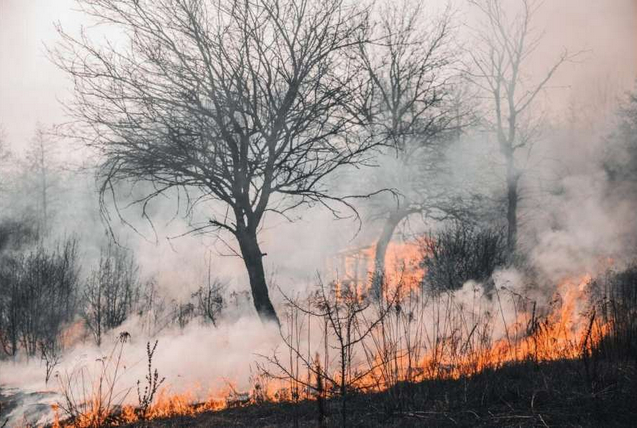Now, in a new study, scientists have found that by projecting two different types of fire weather conditions, an additional half-degree of warming could drastically increase the likelihood and significance of blazes worldwide.
Under the 2015 Paris Agreement, the United Nations Framework Convention on Climate Change agreed to pursue efforts to limit the temperature increase to 2.0°C and, ideally, to 1.5°C, over preindustrial levels.
However, even before that treaty was signed, scientists had already warned that those "best case" targets were unlikely to be achievable. Consequently, many fire weather studies are built with models that simulate much higher levels of climate warming.
Recently, researchers from South Korea, Japan, and the United States have found that by projecting the fire weather conditions under two mildly varying warming levels—one in which the global climate warms by 1.5°C and the other by 2°C—even just a half-degree of warming could significantly increase the likelihood and significance of wildfires!
"When it comes to the conditions that make wildfires more likely, a little bit of warming goes a long way," explained lead author Rackhun Son, Ph.D. candidate at Gwangju Institute of Science and Technology (GIST), Korea, "but, of course, this is troubling, because it is quite unlikely that we will only be experiencing a little bit of warming."
"Although it is reasonable to look at fire weather under more extreme circumstances, there is little sense in making goals without a good understanding of what might happen if you were to reach those goals," said co-author Seung-Hee Kim of Chapman University, "so, we asked 'what would happen if we did reach these goals? Would the fire weather conditions not become as severe?'"
That answer is complex, but this study's key finding is that just a half a degree of additional warming would likely create a notably greater danger of fire on the most widely inhabited continents, with dangers particularly concentrated in the Amazon rainforest and African savanna, and around the Mediterranean.
"We also provided evidence that places like Australia and Indonesia are likely to reach peak levels of fire susceptibility even before we reach that lower threshold," said co-author Simon Wang of Utah State University.
The study does provide a silver lining of hope to this cloud of danger. Commenting on the implications of their findings, Dr. Wang comments, "If we were somehow able to suppress this extra half a degree of warming, we could reduce climate-driven extreme fire activities in many places, potentially saving many lives and billions of dollars."
The research has been published in the journal Environmental Research Letters.
Links
- Changes in fire weather climatology under 1.5 °C and 2.0 °C warming
- Hotter climate upped risk of Australia's record fires by 30%
- Researchers model regional impacts of specific anthropogenic activities, their influence on extreme fire weather risk
- Australia's Black Summer a climate wake-up call
- (AU) Climate Change Could Put Insurance Out Of Reach For Many Australians
- (AU) Indigenous Expertise Is Reducing Bushfires In Northern Australia. It’s Time To Consider Similar Approaches For Other Disasters
- (AU) Our 'Tree-Change' And 'Sea-Change' Dreams Are Under Threat As Scientists Warn About Building Homes In 'Risky Areas'
- (AU) More Than 100 Australian Plant Species Entirely Burnt In Black Summer Bushfires, Study Finds
- (AU) Climate Change Puts Regional Communities At Risk, Better Regional Planning Needed: Experts
- (AU) Black Summer Bushfires Made Worse By Climate Change, Risk To 'Rapidly Intensify'


No comments:
Post a Comment